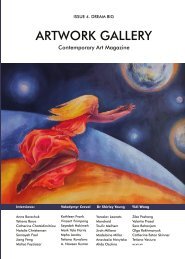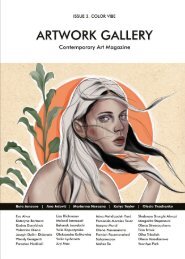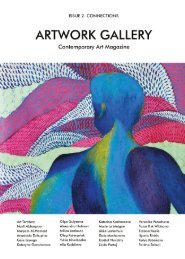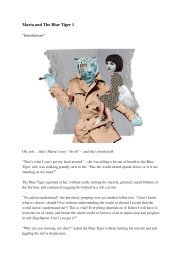Exhibition catalog: Discourse of War
This exhibition is about the impact of the war on the lives and creative paths of artists in Ukraine and worldwide. We want to show how artists’ attitude to art has changed during this year. How changed the vector of their creativity and attitude to the language of art in connection with these events. War has no nationality or religion. War has an impact on everyone individually and on all of humanity in general. Our goal is to show how artists from different parts of the world perceive war. This is an art discourse between artists and viewers.
This exhibition is about the impact of the war on the lives and creative paths of artists in Ukraine and worldwide. We want to show how artists’ attitude to art has changed during this year. How changed the vector of their creativity and attitude to the language of art in connection with these events.
War has no nationality or religion. War has an impact on everyone individually and on all of humanity in general. Our goal is to show how artists from different parts of the world perceive war. This is an art discourse between artists and viewers.
You also want an ePaper? Increase the reach of your titles
YUMPU automatically turns print PDFs into web optimized ePapers that Google loves.
KSENIIA STEPAS
Kyiv, Ukraine
@kseniiastepas
About project
Almost 100 years ago, in the 1920s, during the rise of Ukrainian culture, the building “Slovo” was
built in Kharkiv, which was intended for writers and artists. The building had a symbolic letter
“C” (“word”) in the plan. The Ukrainian elite settled under one roof - among them, such famous
writers and artists as M. Khvylovy, M. Semenko, V. Sosyura, L. Kurbas and many others. The “Slovo”
house was originally an ideal place for the cultural elite of Ukraine. But their lives turned into
horror in an instant: persecution, arrests, exile, executions. As it turned out later, the house was
created so that it was more convenient for the NKVD authorities to control. Yes, out of 66 existing
apartments of the “Slova” building, residents of 40 apartments were repressed. Over the course of
five years, on Stalin’s personal orders, about 30,000 Ukrainian intellectuals were exterminated.
Almost 100 years have passed since that moment, but history repeats itself again.
On March 7, 2022, the Russian occupiers shelled the Slovo building, every day they destroy
Kharkiv and other cities of Ukraine with rockets and bombs. The methods of the Russian government
have not changed—they destroy culture, shoot and murder people. However, this time
they will not succeed!
Про роботу
Майже 100 років тому, у 1920-х рр, під час піднесення української культури, побудували
у Харкові будинок «Слово», що призначався для письменників та митців. Будинок мав в
плані символічну літеру «С» («слово»). Оселилася під одним дахом українська еліта—cеред
них, такі відомі письменники та митці,як М.Хвильовий,М.Семенко,В.Сосюра,Л.Курбас
та багато інших. Будинок «Слово» спочатку був ідеальним місцем для культурної еліти
України. Але їхнє життя в мить перетворилося на жах: переслідування,арешти,заслання,
розстріли. Як виявилося потім, будинок був створений для того щоб органам НКВС
було зручніше контролювати. Так,із 66 існуючих квартир будинка «Слова» репресували
мешканців 40 квартир. Протягом п’яти років, за особистим розпорядженням Сталіна,
було знищено близько 30 000 українських інтелігентів.
Пройшло майже 100 р. з цього моменту, проте історія повторюється знову.
7 березня 2022 російські окупанти обстріляли будинок Слово,кожного дня знищують
ракетами і бомбами Харків та інші міста України. Методи росіійської влади не змінилися—
знищують культуру, розстрілюють та мордують людей. Однак цього разу в них нічого не
вийде!
83














